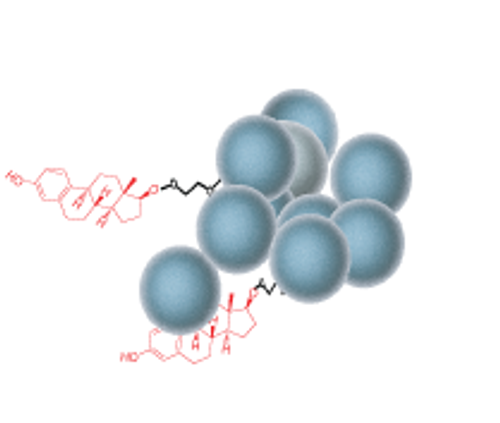Product Description
| Download Documents | |
| SDS | USER MANUAL |
Glyoxyl agarose has been frequently used for multipoint covalent attachment of protein (including antibody and enzyme) and is particularly suited for enzyme immobilization when the stability of the immobilized enzyme is a concern (Selected review ref.: Zucca P. et. al. Molecules 2016, 21, 1577).
CellMosaic® designed this kit to work directly with glyoxyl agarose. Glyoxyl groups are aliphatic aldehyde groups with low steric hindrance towards the immobilization reaction and high stability at alkaline pH. Glyoxyl reacts with the amino group, forming Schiff’s base (imino bond). The imino bond is not very stable and can be reversible, so only proteins that form several imino bonds will be able to stay. For this reason, glyoxyl agarose permits the immobilization of the protein through the area with the highest density of lysine groups, where the highest likelihood of multipoint covalent attachment may be achieved. This multiple covalent attachment also allows appropriate alignment of the protein on the surface. After immobilization, the double bond of the Schiff’s base is finally reduced to form a stable secondary amino bond. The remaining aldehyde groups are converted into inert hydroxyl groups.
Proteins such as antibody containing disulfide bridges or enzyme bearing a metal ion in the active center may be affected by the final reducing step and should be used cautiously with this method.
Key Features of this Immobilization Kit:
-
Minimum requirement for immobilization set-up
-
All reagents, buffers, and plasticwares are included
- Highly activated glyoxyl agarose
- Stable and multipoint covalent attachment
-
Easy preparation with air push mechanism for washing: less than 2 hr hands-on time
Specification of the Solid Support
- Functional groups: Glyoxyl
- Matrix: 4% beaded agarose (source: GE Life Sciences, Sepharose® 4B)
- Particle size: 45-165 um
- Mean bead size: 90 um
- Ligand concentration: ~100 μmol glyoxyl per mL agarose
- Protein loading assessed by Protein A (maximum loading): 0.2 umole per ml agarose
Specification of the Immobilized Product
- Immobilization chemistry: immobilized via glyoxyl agarose and reduction
- Chemical stability: stable
- pH Stability: stable
Requirement for protein (including antibody and enzyme)
- Preferably >90% pure by gel electrophoresis
- Total amount: 1-25 mg protein content as measured by UV and depend on your loading requirement (>25 mg is fine)
- If protein is not stable at pH 10.0, it should not be used
- Protein with a disulfide bridge may be affected by the reducing condition
- Enzyme with a metal ion in the active center may be affected by the reducing condition













